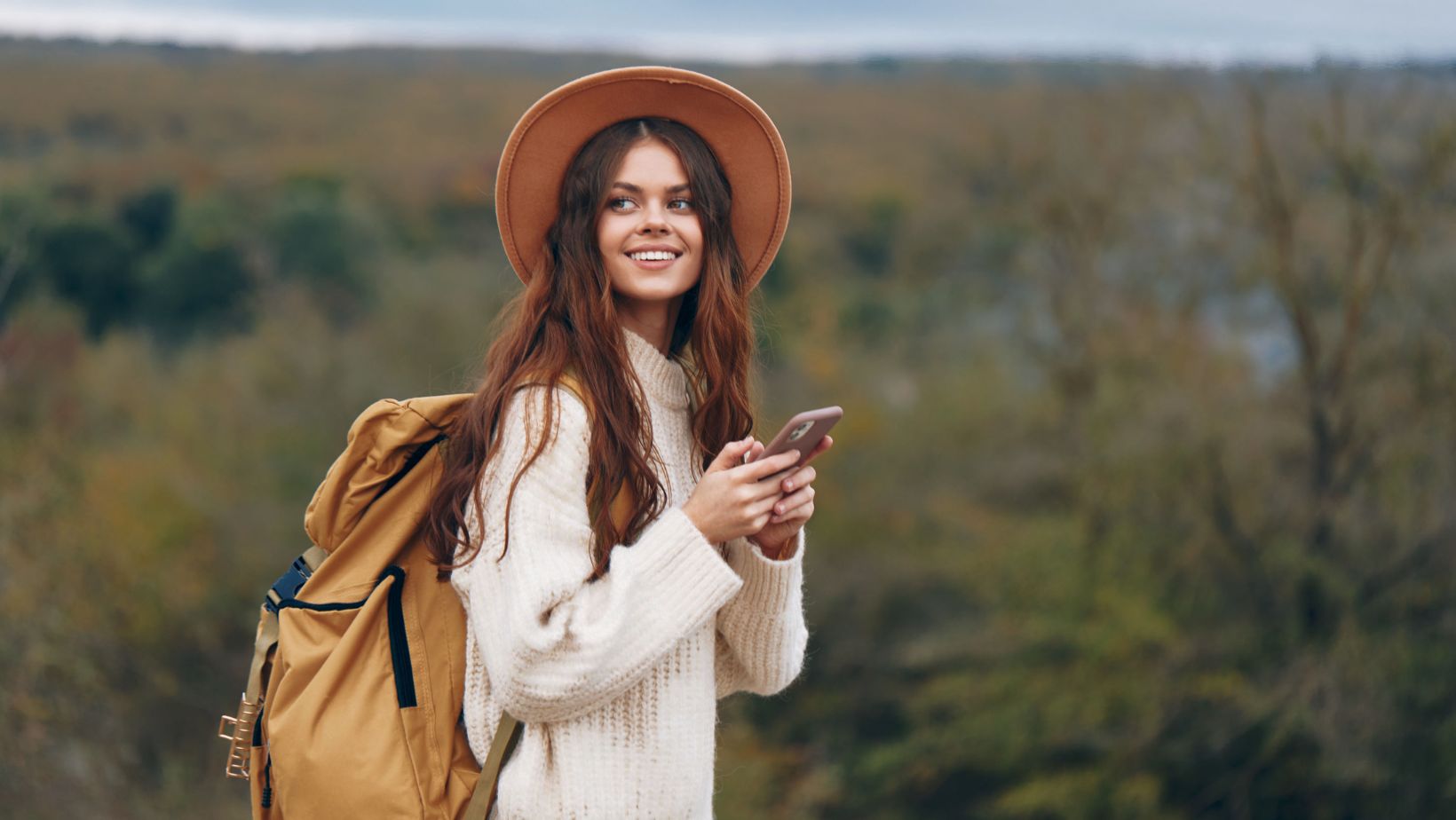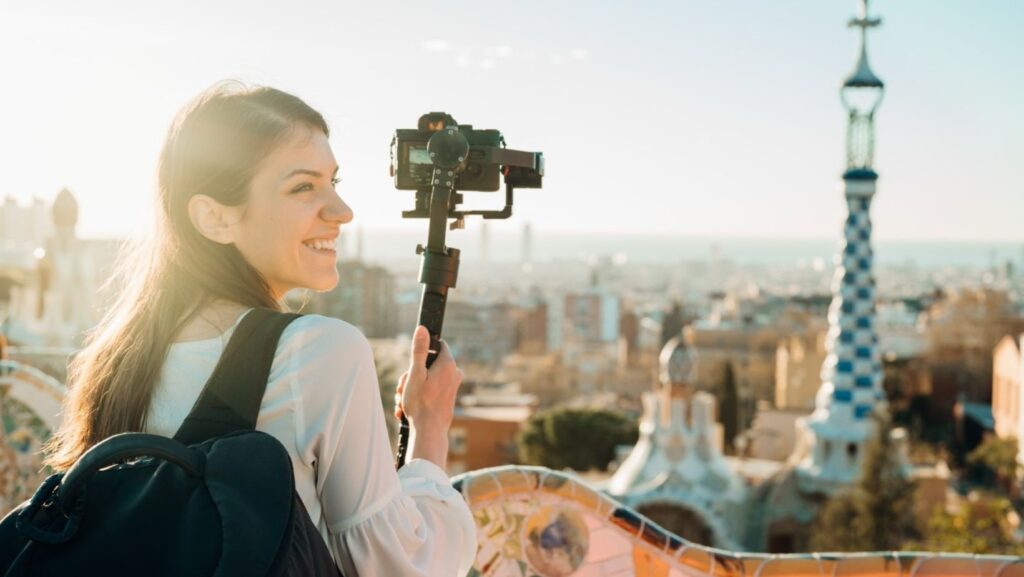Image via Dreamstime.com
Travel and photography go hand-in-hand like sunsets and silhouettes. The urge to document every sweeping view, colorful street scene, or perfectly plated dish is strong—and for good reason. Photographs help us remember. They let us share our journeys and, if we’re lucky, they let others feel what we felt in that moment.
But here’s the catch: sometimes, the camera becomes a wall between you and the experience itself. You’re so focused on composing the perfect frame that you miss the warmth of the moment. You chase the golden hour, but forget to savor the golden silence. You leave with beautiful images—but were you really there?
Striking a balance between documenting and experiencing travel isn’t easy, especially in a world that rewards constant content. But it is possible. Here’s how to take meaningful photos and stay present while exploring the world.
1. Set Your Intention Before the Trip
Start by asking: What kind of traveler—and photographer—do I want to be on this trip?

Your answer might change depending on your destination, purpose, or mood. Maybe you’re:
- Building a photography portfolio
- Capturing content for your brand or clients
- Collecting memories with family or friends
- Traveling solo for reflection and creative recharge
Clarifying your intention helps you define how much time and energy to dedicate to photography—and how much to simply be in the moment.
For example, if this trip is more about connection or rest, you might intentionally limit your shooting windows. If it’s a photo-first expedition, schedule time to shoot without guilt—but still plan for off-camera moments to take in the culture and environment.
2. Designate “Shoot” and “No-Shoot” Times
Not every hour of your trip needs to be spent behind a lens. One of the easiest ways to find balance is to divide your day—or even your whole trip—into blocks of “shooting time” and “present time.”
Try this:
- Morning sessions: Head out for a focused shoot at sunrise or during golden hour.
- Midday break: Put your camera away and fully enjoy lunch, museums, or wandering.
- Evening mix: Bring your camera along but only shoot if something truly moves you.
You can also designate full “camera-free days”—perfect for excursions, meeting locals, or unplugging without pressure.
This approach helps reduce the constant scanning for “content” and allows your senses to soak in the place more freely.
3. Be Selective With What You Capture
It’s easy to fall into the “capture everything” trap, especially in visually rich places. But shooting everything often means experiencing nothing.
Instead, shoot with intention. Ask yourself:
- Does this moment truly inspire me?
- Am I capturing this because it matters, or because I feel like I “should”?
- Can I describe this scene with words instead—or just with memory?
You’ll often find that a few well-thought-out frames tell a richer story than hundreds of quick shots. And by slowing down, you engage more deeply with your environment.
A slower, more mindful pace also helps you improve your photography—by focusing on light, story, emotion, and composition, not just volume.
4. Travel Light, Travel Smart
The more gear you carry, the more likely photography will dominate your trip. While that might be ideal for professional assignments, it can hinder spontaneity and presence during leisure travel.
Consider:
- Bringing one versatile lens instead of three
- Using a mirrorless or compact camera instead of a bulky DSLR
- Shooting on your phone for casual moments and your camera for planned shoots
- Choosing a lightweight tripod or skipping it entirely if not essential
Traveling light means less fuss, more freedom, and more time with your eyes up instead of your bag open.
5. Embrace the Power of the Snapshot
Not every photo has to be a masterpiece. Sometimes, a quick snap is enough to anchor a memory.
Feel the moment, then take the shot. Let your camera—or your phone—be a tool for capturing feelings, not just flawless compositions. A blurry photo of your travel partner laughing can hold more meaning than a technically perfect shot of a sunset.
Embracing imperfection takes pressure off and keeps you connected to the joy of travel. After all, you’re not just curating a highlight reel—you’re documenting a lived experience.
6. Use Journaling to Complement Your Visual Story
Photography freezes a moment. Journaling gives it voice.
Consider keeping a simple travel journal alongside your camera. Jot down details like:
- The sounds and smells you can’t capture in a photo
- The conversations that moved you
- The mood behind the moment
- Thoughts while riding a train or waiting in line
Later, when you look back on your photos, these notes will add emotional depth and help you remember the story behind the shot—not just the scene.
This is especially powerful if you plan to share your images in a blog, zine, or social media post. Your words will turn visuals into full-bodied narratives.
7. Connect With People, Not Just Places
Some of the richest travel moments come from human connection. But it’s hard to connect when you’re always behind the camera.
If you meet someone interesting—whether a fellow traveler, local artisan, or curious child—pause. Put your camera down. Talk. Share. Laugh. Listen.
If the moment feels right, then ask for a portrait. Often, people will say yes because they feel seen first as humans, not as subjects.
Photography can be a bridge, but it’s the conversation that makes the memory stick.
8. Don’t Let Social Media Drive the Experience
The pressure to “get the shot for the ‘gram” can distort your trip. You start hunting for trendy locations instead of hidden gems. You pose more than you pause. You curate more than you connect.

Instead, reframe your purpose.
- Capture what matters to you, not just what looks good online.
- Delay posting until after your trip—so you’re not glued to notifications.
- Share stories, not just images—especially if your work can promote sustainable travel or cultural appreciation.
And if you’re tempted to shoot only what’s popular? Remember: the most meaningful image might be one no one else understands but you.
9. Reflect Often—Why Are You Shooting This?
Every now and then, take a breath and ask yourself: Why am I taking this photo?
- Am I preserving a memory?
- Am I practicing my craft?
- Am I using this as a way to connect?
- Or am I avoiding being present?
There’s no wrong answer—but awareness brings balance.
The goal is not to stop shooting. It’s to align your photography with your intention—so it becomes a part of your travel experience, not a barrier to it.
Final Thoughts
Balancing photography and enjoyment while traveling doesn’t mean compromising your craft or cutting yourself off from creativity. It means redefining what it means to capture a place, a person, a moment.
It means using your lens not just as a recorder—but as a reflector of your experience.
So go ahead—take the photo. Frame the light. Chase the colors. But also:
Put your camera down. Taste the food. Talk to the stranger. Watch the scene unfold without reaching for the shutter.
Because some moments live best when they’re felt first—and photographed second.



